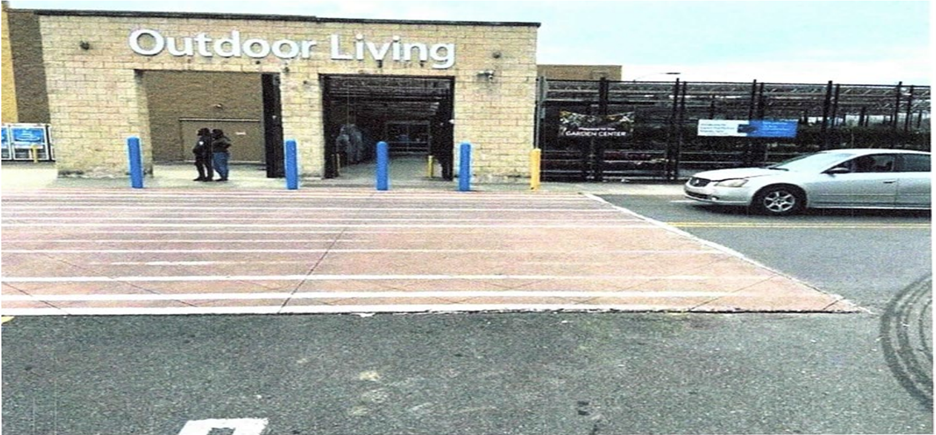A federal court for the Middle District of Louisiana recently ruled that a 1½ inch elevation change in a Walmart parking lot did not present an unreasonable risk of harm to the plaintiff patron in Lacaze v. Walmart Stores, Inc. The case involved a slip and fall/trip and fall accident in the parking lot of Walmart’s Burbank Drive store in Baton Rouge. The defendant moved to dismiss the suit where the plaintiff claimed she tripped and fell as she crossed the area where the black asphalt parking lot adjoined the concrete crosswalk as pictured below.

In the area where the asphalt meets the crosswalk, the surface presented a ¼ inch to 1½ inch change in elevation. Plaintiff admitted the black pavement was distinct in appearance and color from the concrete crosswalk. Surveillance showed that plaintiff looked down at her cell phone at the time she tripped and fell. Though in a high pedestrian traffic area, Wal-Mart maintained this was the first reported incident.
The Court found the condition was open and obvious and did not present an unreasonable risk of harm. To reach this decision, the Court made the following observations:
- Parking lots have clear and apparent utility. Crosswalks do as well. Crosswalks give patrons a designated area to traverse the lot safely.
- The likelihood and magnitude of the risk posed by the condition was low. The Court noted it is common for surfaces of parking lots and sidewalks to be irregular, and no other patrons reported problems or accidents.
- The cost of preventing the harm was high. The Court would not consider only the cost of fixing the specific injury-causing defect. Rather, it considered the cost of eliminating all defects in the Walmart parking lot.
- Plaintiff conducted an ordinary commercial activity that was not dangerous in nature.
The Court concluded that all but factor four pointed to a single conclusion: the 1½ inch elevation difference did not pose an unreasonable risk of harm. The Court reached this conclusion even though the plaintiff retained an expert who gave opinions regarding possible violations of the Americans with Disabilities Act (ADA) and OSHA regulations. The expert’s opinions were insufficient to defeat summary judgment when the condition was open and obvious. In reaching its ultimate conclusion, the Court joined with several other courts, including the following:
- Chambers v. Vill. of Moreauville, where a one-and-one half inch deviation did not present an unreasonable risk of harm;
- Reed v. Wal-Mart Stores, where a height variance of one-fourth to one-half inch between concrete blocks in parking lot did not present an unreasonable risk of harm; and
- Boyle v. Board of Sup’rs, Louisiana State University, where a depression of up to one inch in a sidewalk did not pose unreasonable risk of harm.
Case References: Lacaze v. Walmart Stores, Inc., No. CV 20-696-JWD-EWD, 2022 WL 4227240 (M.D. La. Sept. 13, 2022); Chambers v. Vill. of Moreauville, 2011-0898 (La. 01/24/12), 85 So.3d 593; Reed v. Wal-Mart Stores, 97-1174 (La. 03/04/98), 708 So.2d 362; and Boyle v. Board of Sup’rs, Louisiana State University, 96-1158 (La. 01/14/97), 685 So.2d 1080.
